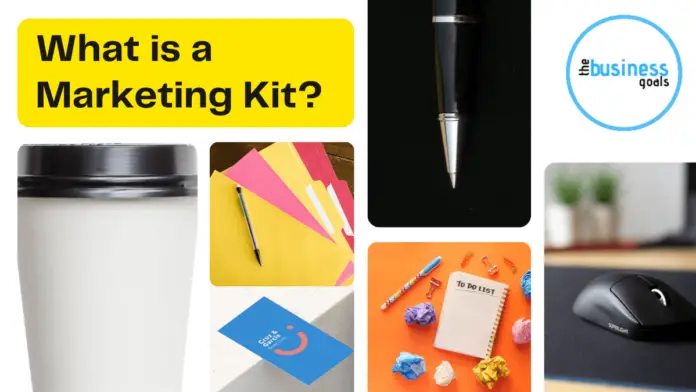Marketing is fundamental to any business. Essentially, marketing encompasses all the activities a company undertakes to promote its products or services. An essential part of these efforts is a marketing kit.
What Is A Marketing Kit?
A marketing kit is an assortment of printed and digital promotional materials companies prepare for existing and prospective customers. The purpose of a marketing kit is to educate new and existing customers, attract new customers, and inform suppliers and media professionals. It is also useful when forming new business partnerships. The portfolio of materials that make up a marketing kit should promote the company as a leader in the marketplace, highlighting the best the business has to offer.
Digital or Print?
In a digitized world, digital promotion materials make sense. Most companies are online and it is not unusual for companies to go exclusively for digital marketing materials. For instance, email marketing has become a powerful marketing tool.
Digital marketing packets have become commonplace. An example of digital marketing content is the About Us tab of a website. Their visitors learn about the people behind the brand and the mission of the company. This is one of the most clicked tabs on websites and the information presented there helps to build credibility.
Business blog posts are another example of digital marketing. Properly optimized blog posts that answer the question that your customers have are a great promotional tool.
Is There Still A Place For Print Marketing Kits?
Print marketing is alive and well. A joint study by the USPS and Temple University has found that while digital content is processed faster, people spent more time looking at physical ads, had a stronger emotional response to physical ads, and remembered them better. Physical marketing materials leave a long-lasting impact and are easier to recall when making a buying decision.
According to these findings, marketers should adopt a physical newsletter over digital content because it will be remembered longer and will be more likely to result in a purchase. As well, with a DTF roll printer, physical material, and promotion can be expanded not just to newsletters but also to cups, t-shirts, pens, and many others.
In the digital age of Facebook, websites, and email, receiving a physical marketing kit has become a unique and memorable experience bound to make an impression on the receiver.
Benefits of Digital Marketing Kits
Of course, you can always digitize your marketing materials. If you have a computer and basic design skills, you can create a whole portfolio with the help of online design tools like Canva and Crello and consolidate it in a PDF that you email to existing and prospective customers.
The one benefit this solution has over print marketing materials is that there is nothing physical to store and keep pristine. And you don’t need to worry about printed materials becoming obsolete because the company has changed its address. Making edits is easy and instant.
What to Include in Your Business Marketing Kit
A marketing kit usually consists of the following;
- Presentation Folder
- Business Cards
- Promotional Products
- Product and Service List
- Process Description
- Client lists
- Testimonials
- Case Studies
Presentation folder
A presentation folder keeps everything together. If your budget doesn’t allow for custom-printed presentation folders, you can buy blank folders and customize them with branding stickers. You can also investigate special paper for your folder. If you do use a custom-printed folder, remember not to have it printed with information that might change in the future.
Business cards
Business cards are a key component of a marketing kit. It is something small, convenient, and informative that you can leave for people to get into contact with you at a later stage.
Whatever you do, don’t opt for the commonplace landscape black and white card. Go for something unusual that will stay in the mind of those who receive it.
Also, vary the business cards you include in your marketing kit according to the people that are likely to deal with the recipients of the cards afterward.
Promotional products
Your marketing kit should include a small gift that you can put your branding on. These can include items like:
- Phone charger
- Pen
- Mouse mat
- Magnet
- Coffee cup
- T-shirt/cap
- Notepad
- Calendar
Think carefully about your promo product; it should be useful and a logical reminder of your company and what it does. If your company sells mobile phones, a phone charger would make sense.
Promo products have a proven track record as excellent marketing material since they are a constant reminder of your brand.
Product and services list
This is an essential part of any marketing kit. After all, the purpose of a marketing kit is to sell, so you need to be clear on what it is that’s for sale.
Consumers want to cut to the chase as soon as possible. They want to know if a business has what they are looking for, so they can decide whether to do business with you or move on. Naturally, a complete product and service list is much more achievable with a digital marketing kit. It is also easier to make the list interesting with videos, but a print kit can include images and infographics to lend interest to the information.
Remember to clearly state how your products and services can benefit your customers, and include a price list.
Process description
Consumers like to understand what they are paying for. If you provide a service, customers would be more eager to do business with you if you give them an insight into your process. For instance, if you are a solar company, you need to explain to customers about preparing the site, the installation, and possible maintenance implications. Here pictures and graphics speak louder than words and text.
Client list
The purpose of including a client list is to prove your standing in the industry. Your list of clients proves that your company has been used by others for a professional service. The bigger the names on your client list, the more trustworthy you’ll come across to new customers. The list of clients you have worked with before gives new clients the assurance that you are a professional setup.
New companies that have not built up a client list yet, can skip this part or replace it with information on the management team and their individual achievements to illustrate the company’s bona fides.
Testimonials
Testimonials are great to include in a marketing kit. Testimonials are a text version of a customer’s declaration that your business is great. They are the words of real people who have benefited from your products and services in the past and serve as proof of your company’s integrity.
Testimonials are more valuable than the sales talk of the marketing team since it speaks of an actual experience that was positive.
Consider that nine out of ten people say that they trust testimonials more than what companies say about themselves.
If you are creating a digital marketing kit, be sure to include video testimonials. Research shows that 37% of people believe testimonial videos are effective because they’re more authentic than what a business says about itself.
Case studies
A case study shows in detail how a company has solved a problem for a customer. Putting together a case study is a compelling way to demonstrate the value of your offerings and attract new customers.
A case study shows how your product or service has helped a customer in real life and importantly, also includes quotes by the customer, which contributes to the authenticity of the exercise. This is not just what your marketing team is saying, it’s what an actual client has seen and experienced – there isn’t any marketing material that can match it.
Flexible For Different Situations
Your marketing kit need not be static. You can vary the contents according to your purpose or the situation. For instance, if you are exhibiting at a trade show, it doesn’t make sense to hand out a full marketing kit that visitors won’t have time to study and will probably just throw away.
In these situations, a business card or a colorful postcard with your information is more likely to accompany visitors than a full marketing kit.
You can also adapt your marketing pack to the person who’s receiving it and what they would need to know about your company.
For an existing customer:
- Case studies
- List of new products or services
For an existing partner:
- Case studies tailored to the industry
- Detailed information on your processes and services
For new recruits:
- Information introducing your company
- A brief overview of services and processes
For new customers, you would of course have a complete marketing kit.
Why Do You Need A Marketing Kit?
A marketing kit is a strategy to attract new customers and retain existing customers, illustrating to them why they chose you in the first place and why they should stay loyal to your brand. It’s a sales tool that can turn a prospect into a paying customer and it can help your company attract top talent.
The article is contributed by an Entrepreneurs Tutor


The content Team Writer is one of the writers from our team of content writers. The Business Goals blog is expanding day by day and we need more writers and brand ambassadors for promoting our media website. If you are interested contact your portfolio through the Write for Us page.



















































